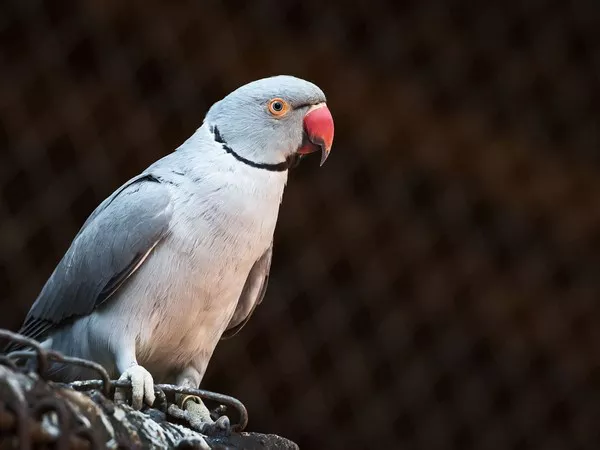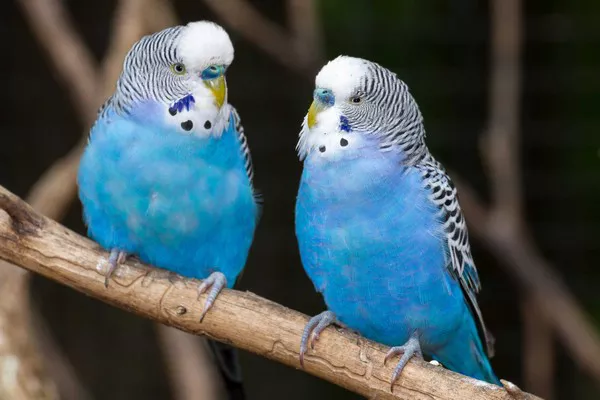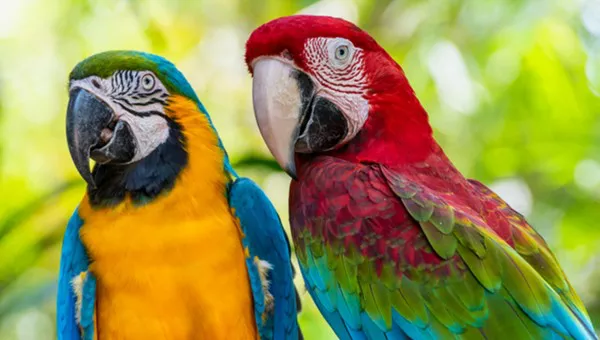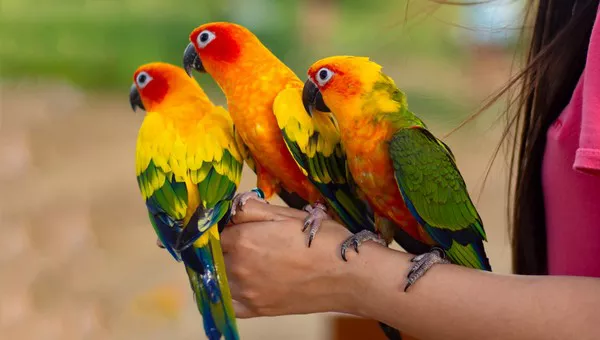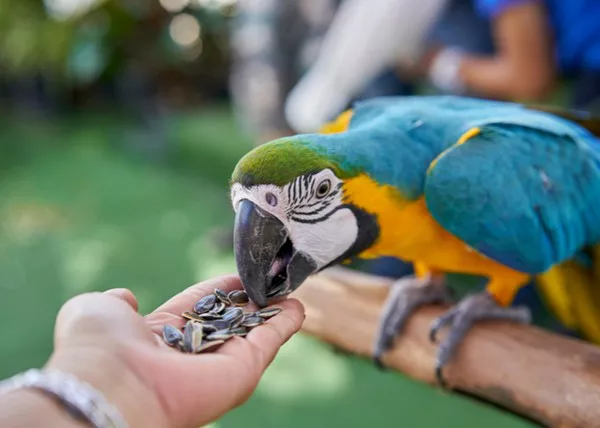Ah, the sun conure! With its bright colors and playful personality, this little feathered friend is like a burst of sunshine in your home. But let’s talk about a topic that might have you scratching your head—and perhaps your pet bird’s head too: molting! Yes, that glorious time when your conure decides to shed some of its fabulous feathers. So, grab a comfy seat and maybe a snack, because we’re diving into the colorful world of sun conure molting!
What Is Molting, Anyway?
Before we dive into the when, let’s chat about the what. Molting is a natural process where birds lose old feathers to make way for new ones. It’s like getting a new wardrobe—only, instead of shopping at your favorite store, your conure is going through a phase of shedding feathers that look like they came straight from a rainbow.
Why Do Birds Molt?
Birds molt for a few reasons, and it’s not just because they’re tired of their old style. Feathers wear out over time from all the flying, flapping, and generally being fabulous. By molting, birds can replace damaged or worn feathers to maintain their ability to fly and keep warm. It’s nature’s way of ensuring they look fabulous while also being functional!
The Stages of Molting
Molting isn’t just a one-and-done situation. Nope, it’s a multi-step process, and like any good reality show, there are stages to it!
Pre-Molt: This is the lead-up to the big event. You might notice your sun conure being a little cranky or quieter than usual. This stage can last anywhere from a few weeks to several months. Think of it as the calm before the colorful storm.
Molt: Here it is—the feather shower! During this stage, your sun conure will start losing feathers. You might find feathers floating around your house like tiny confetti. You may also notice new feathers sprouting in. They’re called “blood feathers,” and they look a bit like tiny sticks. Don’t worry; they’ll fluff up soon!
Post-Molt: After the big feather loss, your conure will enter a stage of recovery. The new feathers will fully grow in, and your bird will be back to its colorful self. This stage usually feels like the bird just got back from a spa day!
How Often Do Sun Conures Molt?
So, how often can you expect this feather drama to unfold? Generally, sun conures molt twice a year. Most birds tend to follow a seasonal pattern, with molting happening in spring and fall. This timing aligns with changes in temperature and daylight, which can affect their feather growth.
However, just like your eccentric uncle who shows up at family gatherings unpredictably, some birds may have their own schedules. Factors such as diet, age, and health can also influence how often and how vigorously your sun conure molts.
Signs Your Sun Conure Is About to Molt
It’s not always easy to tell when your feathered friend is preparing for a feather fling, but there are some signs you can look out for:
Behavior Changes: If your sun conure starts to act a bit grumpy or more cuddly than usual, it might be a sign of impending molting. They might also want to snuggle more, possibly because they’re feeling a bit vulnerable without their feather coat.
Feather Loss: This one’s pretty straightforward! If you start finding more feathers around the house than usual, your conure is likely entering the molting phase. It’s like a tiny feather explosion!
Increased Preening: Your bird may spend more time preening during this time. They need to keep their new feathers in tip-top shape, after all!
Changes in Appetite: Molting can be energy-intensive, and some birds may eat more or less during this time. Keep an eye on your conure’s food habits.
More Vocalization: Sometimes, molting can lead to a bit of extra chatter. Your conure might be expressing its feelings about all the changes!
How Long Does Molting Last?
Ah, the million-dollar question! The duration of the molting process can vary, but generally, you can expect it to last anywhere from a few weeks to a couple of months. During this time, your sun conure will be in and out of various stages of feather loss and regrowth.
Tips for Helping Your Sun Conure During Molting
Now that you’re prepared for the molting season, let’s talk about how to be the best bird parent you can be! Here are some tips to help your sun conure through this colorful transition:
Diet Matters: Provide a balanced diet rich in vitamins and minerals, especially during molting. Foods high in protein, like cooked eggs or sprouts, can help support feather growth.
Hydration is Key: Keep that water bowl full! Staying hydrated is essential for healthy feather regrowth.
Create a Comfortable Environment: Ensure your conure has a cozy space to relax. Reducing stressors in the environment can help them feel more at ease during this transitional time.
Extra Attention: Your sun conure might crave more attention, so be ready for some extra snuggles! Offer gentle pets and cuddles to help them feel secure.
Regular Grooming: If your conure will tolerate it, regular grooming can help remove loose feathers and prevent matting. Plus, it’s a great bonding experience!
Common Myths About Molting
Like many things in life, molting is surrounded by myths and misconceptions. Let’s debunk a few, shall we?
Myth: Molting is a sign of illness.
Reality: While molting can be stressful, it’s a natural process. However, if your bird shows signs of distress beyond normal behavior, it’s best to consult a vet.
Myth: You should pluck your bird’s feathers to help them molt.
Reality: No, no, no! Plucking feathers is harmful and should never be done. Your bird’s feathers will come out naturally.
Myth: All birds molt the same way.
Reality: Different species and individual birds may have different molting patterns and behaviors. Just like us, every bird is unique!
The Emotional Rollercoaster of Molting
Let’s face it: molting can be an emotional ride for both you and your sun conure. As your bird goes through the stages, you might find yourself feeling a bit sad to see those beautiful feathers go. But take heart! New feathers mean a fresh start and a whole new look!
Fun Facts About Sun Conures
While we’re on the topic of these fabulous birds, here are some fun facts to brighten your day:
Color Explosion: Sun conures are known for their striking yellow and orange plumage, often mixed with green. They’re like little walking sunsets!
Chatterboxes: These birds are notorious for being chatty. If you enjoy a good conversation, a sun conure might just be your perfect companion!
Social Butterflies: Sun conures thrive on social interaction. They love to be part of the family, so be prepared for some serious bonding time.
Lifespan: With proper care, sun conures can live for 20 years or more. That’s a lot of time for feathered fun!
The Bright Side of Molting
While molting may seem like a messy affair, it has its silver lining! Here are some bright spots to remember:
New Feathers: You’ll get to see your conure strutting its stuff in a fresh, vibrant coat. It’s like a fashion makeover!
Bonding Opportunities: Spending extra time with your conure during molting can strengthen your bond and create even more trust.
It’s Normal: Understanding that molting is a natural part of life can help you embrace the chaos. Feathered friends just need a little extra love during this time.
Conclusion
So there you have it! The colorful and sometimes chaotic world of sun conure molting is a natural process that’s part of your bird’s life. Remember to be patient and loving as they go through this stage, and soon enough, you’ll be rewarded with a beautiful, vibrant bird who’s ready to show off its new look.
Whether it’s snuggles, chats, or just watching your conure play, the time you spend together during this molting phase will only enhance the bond you share. So, prepare for a feather extravaganza, and enjoy the ride! After all, life is just a little brighter with a sun conure around—especially when they’re sporting their freshest feathers!
Related Topics:


